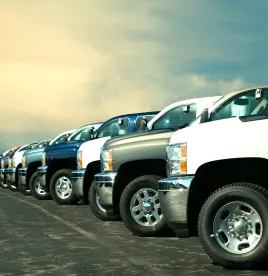According to the U.S. federal government statistics, over 4,300 people have been killed in crashes involving tractor-trailers and other large trucks in 2016, which is a 28 percent increase over 2009. Fatal truck crashes are growing at almost three times the rate of deadly crashes overall in the U.S. For years, the National Transportation Safety Board (NTSB) has supported life-saving legislation that would require all heavy trucks to be equipped with crash-avoidance technology.
Specifically, the NTSB has demanded that the National Highway Traffic Safety Administration (NHTSA), the federal regulatory agency responsible for protecting people from danger on U.S. roadways, to take action to prevent trucks from rear-ending other vehicles. On at least 10 occasions since the late 1990s, the NTSB has recommended that the NHTSA require forward crash avoidance and mitigation systems on all heavy trucks.
Two decades after the safety board first made their recommendation, NHTSA still has yet to publish a proposed regulation, much less implement one.
Meanwhile, the auto industry has promised that by 2022, collision-avoidance technology will be standard on all new passenger vehicles sold in the U.S. Heavy truck manufacturers, on the other hand, have made no such commitment or promise. As a result, only approximately 10 percent of big rigs on the road today have collision-avoidance technology installed.
According to companies that have already implemented current forward collision-avoidance systems, the technology can prevent more than 7 out of 10 rear-end truck collisions.
The three leading causes of fatal auto wrecks are speeding, distracted driving, and impairment according to the NTSB. Today’s crash-avoidance systems were designed to compensate for human failure and distraction.
The NHTSA would only provide a written statement in regards to their lack of action: “NHTSA researched early systems from 2013 to 2016, and is currently studying next-generation AEB (automatic emergency braking) technology through a naturalistic driving study using a field operational test. NHTSA expects to complete the critical field operation testing in 18 to 24 months. This research and other information will help inform an agency decision on next steps.”
As far as safety advocates are concerned, the NHTSA would be better off moving forward with existing technology that has been proven to reduce crashes and save lives rather than committing so much of its resources on far-off concepts like driverless cars.
Unfortunately, this is all too common behavior from NHTSA, which can take years studying and considering a proposal only to suddenly abandon it. This is particularly discouraging to safety advocates, as only federal regulatory agencies like the NHTSA have the authority to impose rules on the industry, other than Congress.
The U.S. is falling behind compared to several other countries when it comes to this life-saving technology. The European Union passed a rule a decade ago that all new big rigs sold in the EU’s 28 member nations must come standard with automatic emergency braking as of 2015.
Last year, South Korea declared it would require automatic emergency braking as well as lane-departure warning technology on all new cars by 2021.



 />i
/>i

